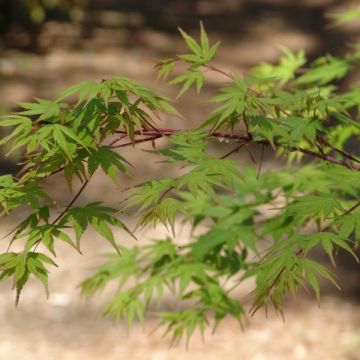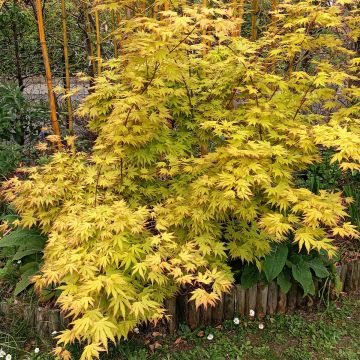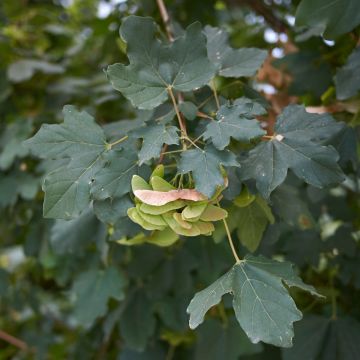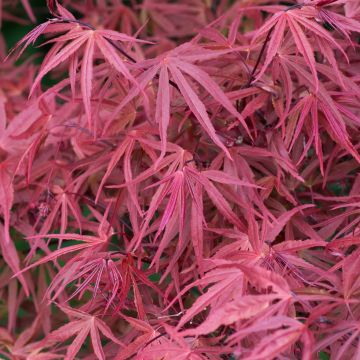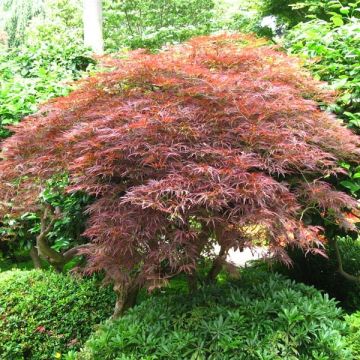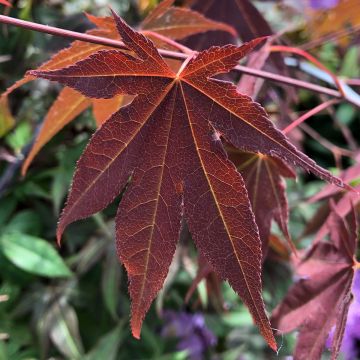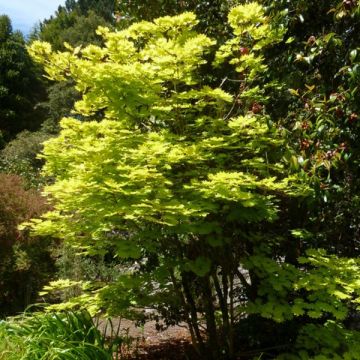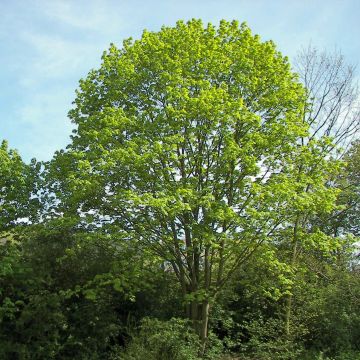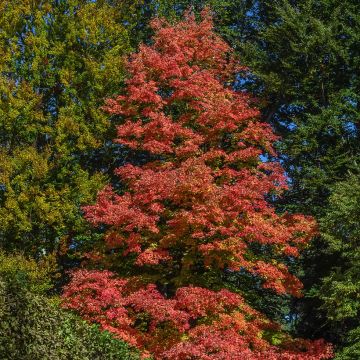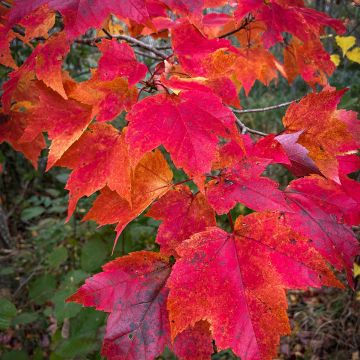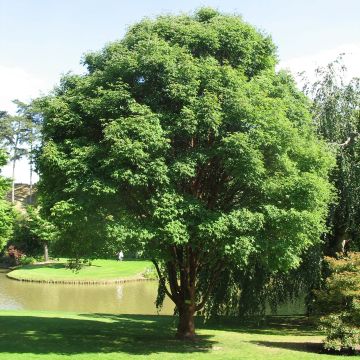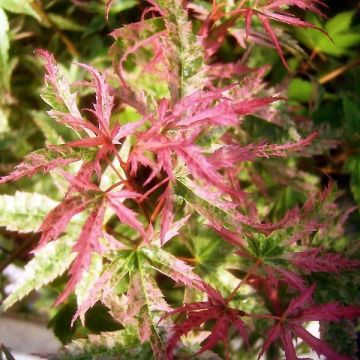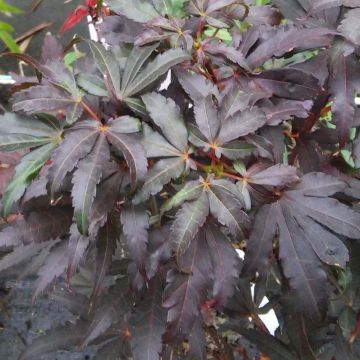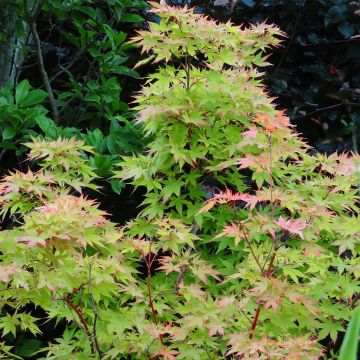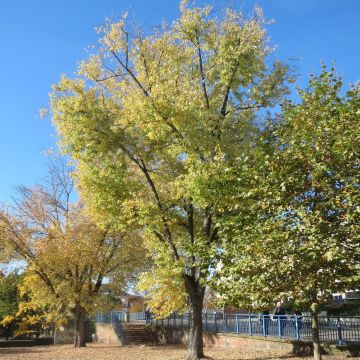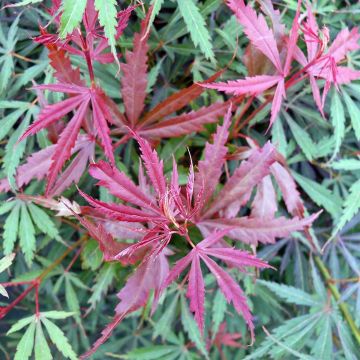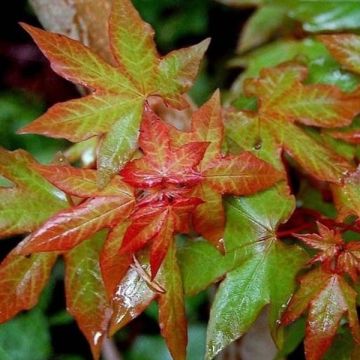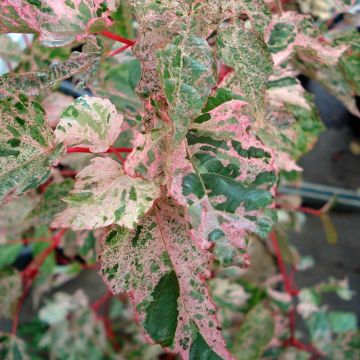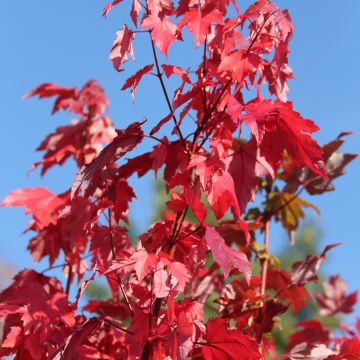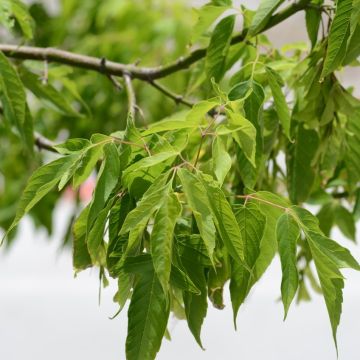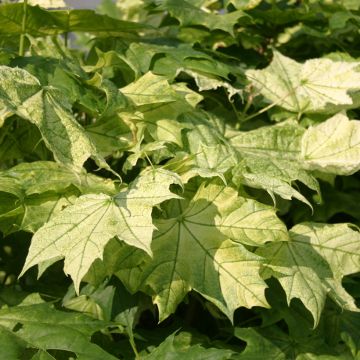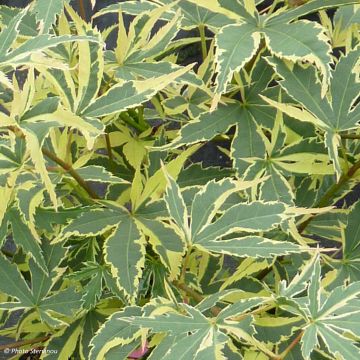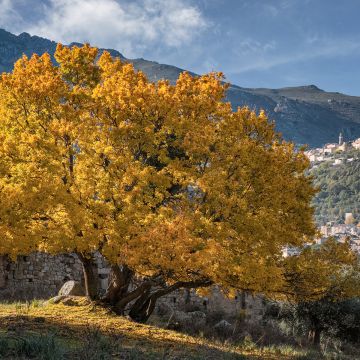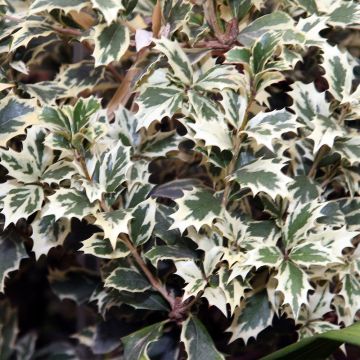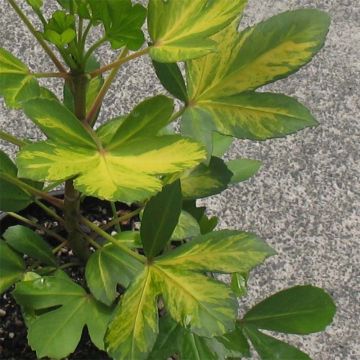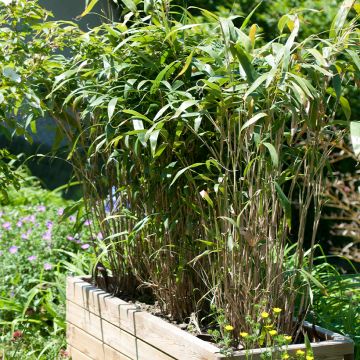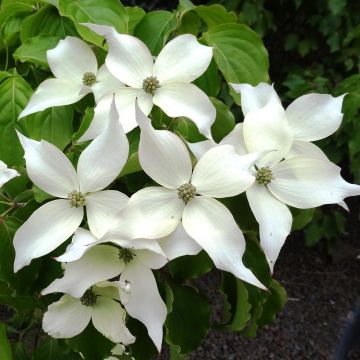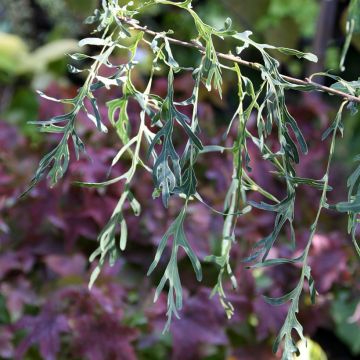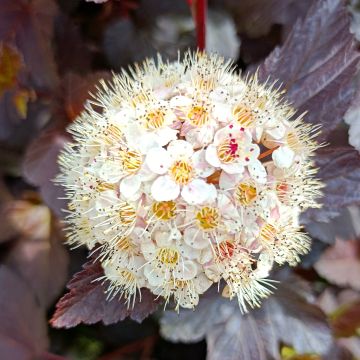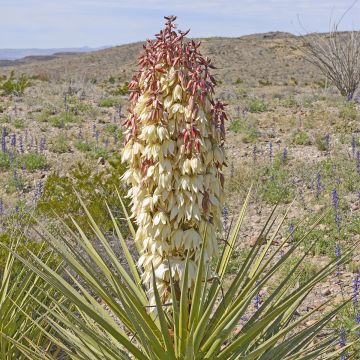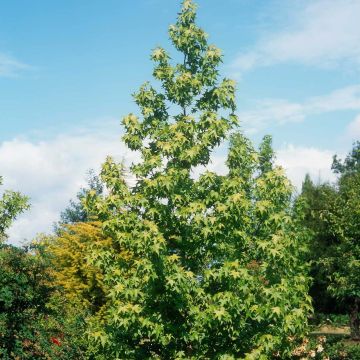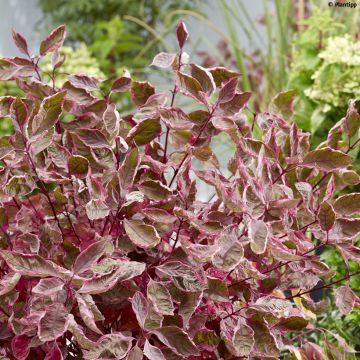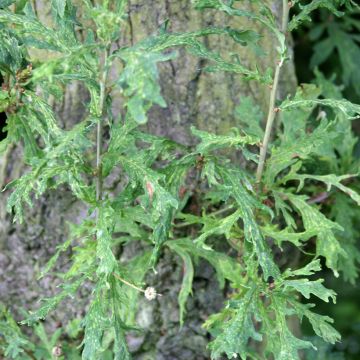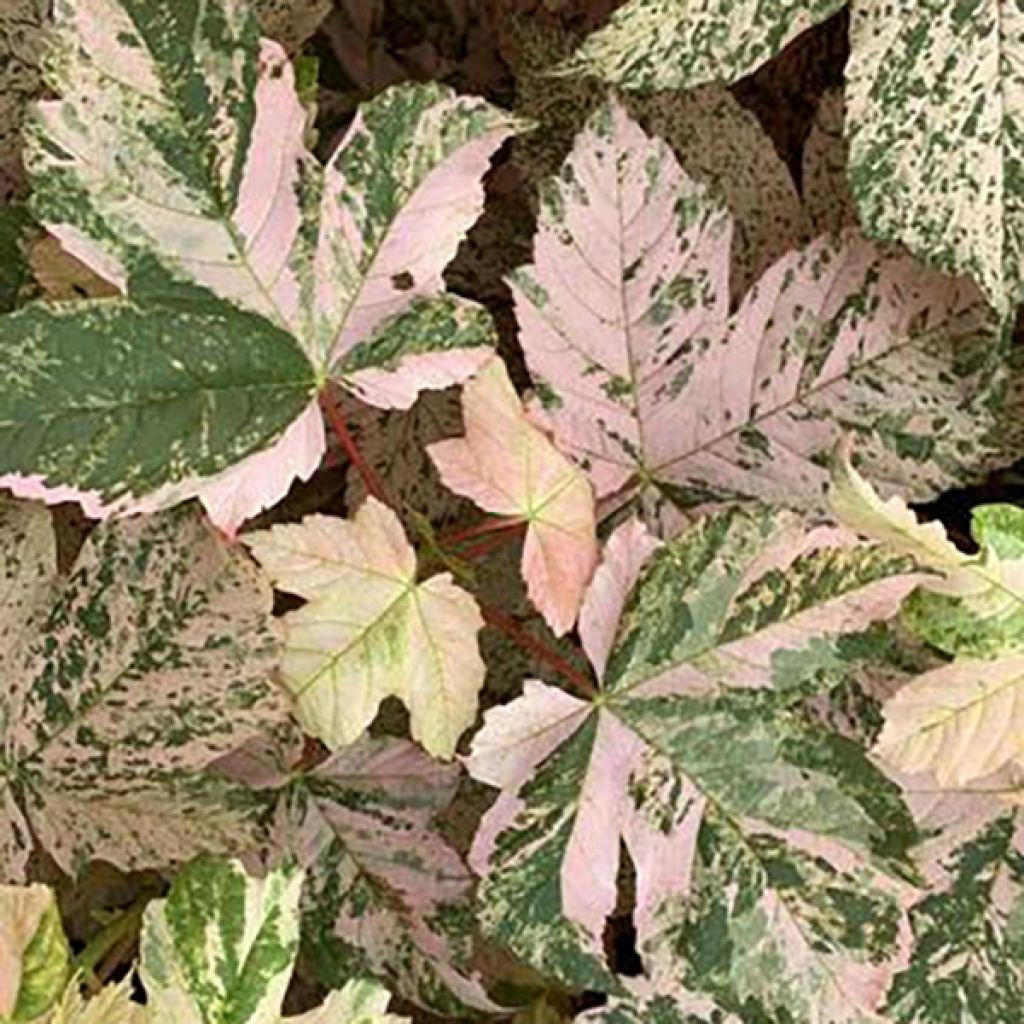

Erable sycomore Eskimo Sunset - Acer pseudoplatanus
Acer pseudoplatanus Eskimo Sunset - Maple
Acer pseudoplatanus Eskimo Sunset
Sycamore, Sycamore Maple, Great Maple
An absolute wonder! The leaves have splendid colours and an admirable shape. It thrives well in a pot, but the growth medium must remain consistently moist, otherwise it loses its leaves. Growth is very slow. It is susceptible to aphids in spring.
Catherine, 31/10/2022
Why not try an alternative variety in stock?
View all →This plant carries a 24 months recovery warranty
More information
We guarantee the quality of our plants for a full growing cycle, and will replace at our expense any plant that fails to recover under normal climatic and planting conditions.
From €5.90 for pickup delivery and €6.90 for home delivery
Express home delivery from €8.90.
Delivery to Corse prohibited: UE law prohibits the import of this plant from mainland France to Corse as part of the fight against Xylella fastidiosa. Please accept our sincere apologies.
More information
Does this plant fit my garden?
Set up your Plantfit profile →
Description
Acer pseudoplatanus 'Eskimo Sunset' is a variety of Sycamore known for its unique foliage, slow growth, and moderate development. Its palmate leaves change colour throughout the seasons, displaying various shades of pink and orange in spring, becoming variegated and splashed with cream and pink on a green background in summer. In autumn, it turns bright yellow and orange before falling. All these qualities make this deciduous small tree a beautiful addition to gardens of modest size.
Native to mountainous regions of Europe, the Acer pseudoplatanus, not to be confused with the Acer platanoides, is known as Sycamore Maple, False Plane Tree, Large Maple, or Mountain Maple, less commonly as White Maple, depending on the region. It is a large forest tree belonging to the Aceraceae family, capable of reaching 35 to 40 metres (114 feet 10 inches to 131 feet 2 inches) in height, often associated with fir and beech trees. This light and semi-shade species can live up to 500 years. Its wood is commonly used for musical instrument production.
Acer pseudoplatanus 'Eskimo Sunset' is a seedling discovered in the Esk Valley, located on the east coast of the North Island of New Zealand. It has an oval, dense, and balanced habit. This slow-growing tree reaches about 5 metres (16 feet 5 inches) in height and 3 metres (9 feet 10 inches) in width at the age of 20. Its deciduous foliage is composed of large palmate leaves, divided into 5 pointed and dentate lobes, measuring 15 to 20 cm (5.9 to 7.9 in) in length, and borne on red petioles. The foliage colouration can vary depending on sun exposure. Flowering occurs in April-May, after the leaves appear. The small yellow flowers are highly attractive to bees and arranged in pendulous terminal clusters. The abundant fruiting takes the form of two-winged fruits called samaras and only appears on subjects aged at least 20 years. The bark of the branches is olive green to grey and peels off in large plates as it ages.
Acer pseudoplatanus 'Eskimo Sunset' will stand out when planted alone or in front of a larger grove of trees. Its moderate development is suitable for medium to large-sized gardens. Resistant to heavy frost, wind, and sea spray, it adapts to any soil that is sufficiently deep and moist without excessive limestone. Its variegated foliage is sensitive to scorching sun so it prefers a semi-shaded position in hot climates. To accompany it in the garden, consider variegated dogwoods and Japanese maples. You can plant small shrubby honeysuckles (Lonicera nitida or L. pileata) or 'Bellecour' ivy at its base to enhance its appearance.
Report an error about the product description
Plant habit
Flowering
Foliage
Botanical data
Acer
pseudoplatanus
Eskimo Sunset
Aceraceae
Sycamore, Sycamore Maple, Great Maple
Cultivar or hybrid
Other Acer - Maple tree
Planting and care
Acer pseudoplatanus Eskimo Sunset should be planted in spring or autumn in deep, moist soil, preferably with an acidic tendency, in a sunny or partially shaded position. In very sunny regions, it should be placed in partial shade as its variegated foliage is sensitive to intense sunlight. It is perfectly hardy and resistant to wind and salt spray. Keep the soil moist during the first two summers after planting. Mulching can be beneficial to maintain soil moisture, depending on the climate. Pruning is not essential. Remove dead wood in spring.
Planting period
Intended location
Care
-
, onOrder confirmed
Reply from on Promesse de fleurs
Striking foliage shrubs
Haven't found what you were looking for?
Hardiness is the lowest winter temperature a plant can endure without suffering serious damage or even dying. However, hardiness is affected by location (a sheltered area, such as a patio), protection (winter cover) and soil type (hardiness is improved by well-drained soil).

Photo Sharing Terms & Conditions
In order to encourage gardeners to interact and share their experiences, Promesse de fleurs offers various media enabling content to be uploaded onto its Site - in particular via the ‘Photo sharing’ module.
The User agrees to refrain from:
- Posting any content that is illegal, prejudicial, insulting, racist, inciteful to hatred, revisionist, contrary to public decency, that infringes on privacy or on the privacy rights of third parties, in particular the publicity rights of persons and goods, intellectual property rights, or the right to privacy.
- Submitting content on behalf of a third party;
- Impersonate the identity of a third party and/or publish any personal information about a third party;
In general, the User undertakes to refrain from any unethical behaviour.
All Content (in particular text, comments, files, images, photos, videos, creative works, etc.), which may be subject to property or intellectual property rights, image or other private rights, shall remain the property of the User, subject to the limited rights granted by the terms of the licence granted by Promesse de fleurs as stated below. Users are at liberty to publish or not to publish such Content on the Site, notably via the ‘Photo Sharing’ facility, and accept that this Content shall be made public and freely accessible, notably on the Internet.
Users further acknowledge, undertake to have ,and guarantee that they hold all necessary rights and permissions to publish such material on the Site, in particular with regard to the legislation in force pertaining to any privacy, property, intellectual property, image, or contractual rights, or rights of any other nature. By publishing such Content on the Site, Users acknowledge accepting full liability as publishers of the Content within the meaning of the law, and grant Promesse de fleurs, free of charge, an inclusive, worldwide licence for the said Content for the entire duration of its publication, including all reproduction, representation, up/downloading, displaying, performing, transmission, and storage rights.
Users also grant permission for their name to be linked to the Content and accept that this link may not always be made available.
By engaging in posting material, Users consent to their Content becoming automatically accessible on the Internet, in particular on other sites and/or blogs and/or web pages of the Promesse de fleurs site, including in particular social pages and the Promesse de fleurs catalogue.
Users may secure the removal of entrusted content free of charge by issuing a simple request via our contact form.
The flowering period indicated on our website applies to countries and regions located in USDA zone 8 (France, the United Kingdom, Ireland, the Netherlands, etc.)
It will vary according to where you live:
- In zones 9 to 10 (Italy, Spain, Greece, etc.), flowering will occur about 2 to 4 weeks earlier.
- In zones 6 to 7 (Germany, Poland, Slovenia, and lower mountainous regions), flowering will be delayed by 2 to 3 weeks.
- In zone 5 (Central Europe, Scandinavia), blooming will be delayed by 3 to 5 weeks.
In temperate climates, pruning of spring-flowering shrubs (forsythia, spireas, etc.) should be done just after flowering.
Pruning of summer-flowering shrubs (Indian Lilac, Perovskia, etc.) can be done in winter or spring.
In cold regions as well as with frost-sensitive plants, avoid pruning too early when severe frosts may still occur.
The planting period indicated on our website applies to countries and regions located in USDA zone 8 (France, United Kingdom, Ireland, Netherlands).
It will vary according to where you live:
- In Mediterranean zones (Marseille, Madrid, Milan, etc.), autumn and winter are the best planting periods.
- In continental zones (Strasbourg, Munich, Vienna, etc.), delay planting by 2 to 3 weeks in spring and bring it forward by 2 to 4 weeks in autumn.
- In mountainous regions (the Alps, Pyrenees, Carpathians, etc.), it is best to plant in late spring (May-June) or late summer (August-September).
The harvesting period indicated on our website applies to countries and regions in USDA zone 8 (France, England, Ireland, the Netherlands).
In colder areas (Scandinavia, Poland, Austria...) fruit and vegetable harvests are likely to be delayed by 3-4 weeks.
In warmer areas (Italy, Spain, Greece, etc.), harvesting will probably take place earlier, depending on weather conditions.
The sowing periods indicated on our website apply to countries and regions within USDA Zone 8 (France, UK, Ireland, Netherlands).
In colder areas (Scandinavia, Poland, Austria...), delay any outdoor sowing by 3-4 weeks, or sow under glass.
In warmer climes (Italy, Spain, Greece, etc.), bring outdoor sowing forward by a few weeks.

































